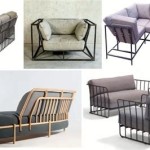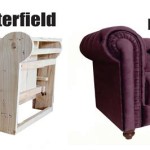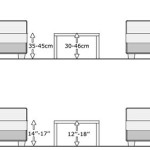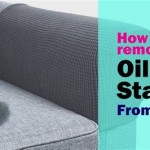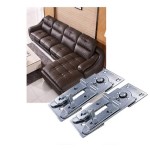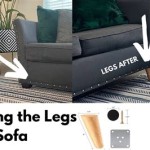Understanding Patio Sofa Cushions: Materials, Maintenance, and Selection
Patio sofa cushions are essential components of comfortable and inviting outdoor living spaces. They provide not only physical support but also contribute significantly to the overall aesthetic appeal of a patio or deck. Given their exposure to the elements, understanding the materials, maintenance practices, and selection criteria for patio sofa cushions is crucial for ensuring their longevity and sustained comfort.
Selecting the right patio sofa cushions involves considering a variety of factors, including the materials used for both the cushion filling and the outer fabric. These choices directly impact the cushion's resistance to weather, its comfort level, and its overall lifespan. Furthermore, understanding proper maintenance techniques can significantly extend the life of your cushions and keep them looking their best.
Key Point 1: Exploring Cushion Filling Materials
The filling material of a patio sofa cushion plays a significant role in its comfort, support, and durability. Several options are available, each with its own set of advantages and disadvantages.
Polyurethane Foam: Polyurethane foam is a common and relatively inexpensive option. It provides a good balance of comfort and support. Different densities of polyurethane foam are available, with higher density foams offering greater support and durability. However, polyurethane foam can retain moisture, potentially leading to mildew growth if not properly treated or protected. It can also degrade over time when exposed to prolonged sunlight, losing its ability to bounce back.
Polyester Fiberfill: Polyester fiberfill is another frequently used filling material. It is lightweight, resistant to mildew, and relatively affordable. However, polyester fiberfill tends to flatten and lose its shape more quickly than polyurethane foam, requiring more frequent replacement or fluffing. The quality of the fiberfill can vary significantly, with some types offering better loft and resilience than others.
Dry Fast Foam: Dry fast foam, also known as reticulated foam, is specifically designed for outdoor use. It has an open-cell structure that allows water to drain through quickly, preventing moisture buildup and the growth of mold and mildew. This type of foam is ideal for environments with frequent rainfall or humidity. Dry fast foam is generally more expensive than polyurethane foam or polyester fiberfill, but its superior drainage properties justify the higher cost in many circumstances.
Down and Feather: While less common for outdoor use due to their susceptibility to moisture damage, down and feather fillings offer exceptional comfort and a luxurious feel. However, they require careful protection from the elements and regular maintenance to prevent clumping and mildew growth. Down and feather cushions are typically best suited for covered patios or porches where they are shielded from direct exposure to rain and sun.
Combination Fills: Some cushion manufacturers utilize a combination of filling materials to achieve a balance of comfort, durability, and cost-effectiveness. For example, a cushion might feature a core of high-density polyurethane foam wrapped in a layer of polyester fiberfill for added softness. These hybrid approaches can offer the benefits of multiple materials while mitigating some of their individual drawbacks.
Key Point 2: Understanding Fabric Options and Their Performance
The fabric covering of a patio sofa cushion is the first line of defense against the elements. The choice of fabric significantly impacts the cushion's resistance to fading, water damage, stains, and mildew.
Solution-Dyed Acrylic: Solution-dyed acrylic fabrics, such as Sunbrella, are widely considered the gold standard for outdoor cushions. The color is incorporated into the fibers during the manufacturing process, resulting in exceptional fade resistance. These fabrics are also highly resistant to water, stains, and mildew. Solution-dyed acrylic fabrics are generally more expensive than other options, but their superior performance and longevity make them a worthwhile investment for many homeowners.
Polyester: Polyester fabrics are a more affordable alternative to solution-dyed acrylic. They offer good fade resistance and are relatively easy to clean. However, polyester fabrics are not as water-resistant as acrylic fabrics and may be more susceptible to staining. The quality of polyester fabrics can vary considerably, with some types offering better durability and performance than others.
Olefin: Olefin fabrics are another popular choice for outdoor cushions. They are lightweight, durable, and resistant to mildew, stains, and fading. Olefin fabrics are also relatively affordable, making them a good option for budget-conscious consumers. However, olefin fabrics are not as soft or comfortable as some other options, and they can be prone to pilling or snagging.
Canvas: Canvas fabrics, typically made from cotton or linen, offer a natural and durable option for outdoor cushions. However, canvas fabrics are not naturally water-resistant and must be treated with a water-repellent finish to prevent water damage and mildew growth. Canvas fabrics are also more susceptible to fading than synthetic fabrics. Regular cleaning and re-treating are necessary to maintain their appearance and performance.
Considerations for Fabric Selection: Beyond the specific fabric type, several other factors should be considered when selecting cushion fabrics. These include the fabric's weight, weave, and texture. Heavier fabrics are generally more durable and resistant to tearing, while tightly woven fabrics offer better water resistance. The texture of the fabric can also affect its comfort and appearance. For example, a smooth fabric may be easier to clean than a textured fabric.
Key Point 3: Effective Maintenance Practices for Prolonged Cushion Life
Proper maintenance is essential for extending the life of patio sofa cushions and maintaining their appearance. Regular cleaning, proper storage, and addressing spills promptly can significantly reduce the risk of damage and prolong the lifespan of your cushions.
Regular Cleaning: Regular cleaning helps to remove dirt, debris, and stains that can damage the fabric and contribute to mildew growth. The frequency of cleaning will depend on the level of exposure to the elements and the frequency of use. However, a general guideline is to clean patio sofa cushions at least once a month, and more frequently if they are exposed to heavy rain, pollen, or other contaminants. Vacuuming the cushions regularly can also help to remove loose dirt and debris.
Spot Cleaning: Addressing spills and stains promptly is crucial to prevent them from becoming permanent. Use a mild soap and water solution to gently blot the stain, working from the outside in. Avoid rubbing the stain, as this can spread it further and damage the fabric. Rinse the area thoroughly with clean water and allow it to air dry completely.
Deep Cleaning: For more stubborn stains or for general cleaning at the end of the season, a deeper cleaning may be necessary. This can be done using a specialized outdoor fabric cleaner or by hand-washing the cushions with a mild detergent. Always follow the manufacturer's instructions for cleaning, as using the wrong cleaning products or techniques can damage the fabric. Before deep cleaning, it is advisable to test the cleaning solution on an inconspicuous area of the cushion to ensure that it does not cause discoloration or damage.
Waterproofing and Protecting: Applying a water-repellent treatment to patio sofa cushions can help to protect them from water damage and mildew growth. These treatments create a barrier that prevents water from penetrating the fabric. Reapply the water-repellent treatment regularly, as the effectiveness of the treatment will diminish over time. Additionally, consider using cushion covers to protect the cushions from direct sunlight and rain when they are not in use.
Proper Storage: Proper storage is essential for protecting patio sofa cushions during the off-season or when they are not in use for extended periods. Store the cushions in a dry, well-ventilated area, such as a garage, shed, or storage bin. Before storing the cushions, make sure they are completely dry to prevent mildew growth. Consider using desiccant packets to absorb any excess moisture in the storage container. Avoid storing the cushions in direct sunlight, as this can cause the fabric to fade and degrade.
Selecting and maintaining patio sofa cushions requires careful consideration of materials and best practices. Understanding the properties of different fillings and fabrics, along with implementing a consistent cleaning and storage routine, is crucial for ensuring the longevity and comfort of these essential outdoor furnishings. By prioritizing quality materials and diligent care, homeowners can create inviting and durable outdoor spaces that will be enjoyed for years to come.

Custom Outdoor Loveseat Sofa Cushions

Water Resistant Rattan Patio Furniture Sofa Replacement Cushion Seat Or Back Pad

Outdoor Cushions Patio Furniture The Home Depot

Custom Outdoor Patio Furniture Replacement Cushion Covers With Israel

Patio Cushions Guide Living Spaces

6pcs Rattan Outdoor Sectional Sofa Set Patio Furniture W Turquoise Cushions 1 Unit Pay Less Super Markets

Floral Outdoor Furniture Cushions Buy Any 2 Save 5

Diy Outdoor Cushions A Erfly House

Gymojoy Bwood Brown Wicker Outdoor Patio Sofa Couch With Beige Cushions Ss008 1 The Home Depot

Real Living Oakmont Navy 6 Piece Replacement Patio Sofa Cushion Set Big Lots


